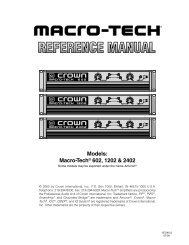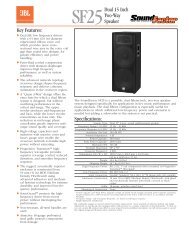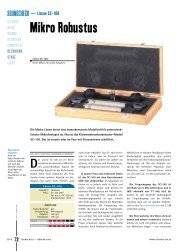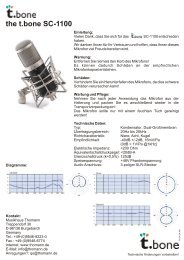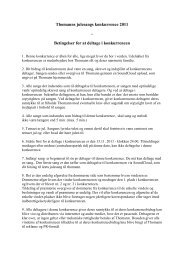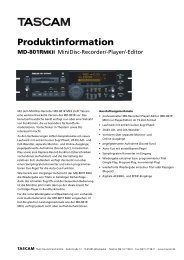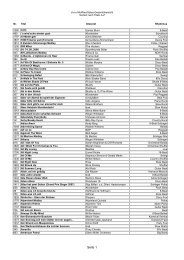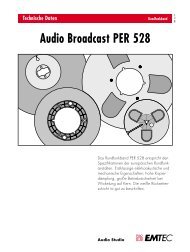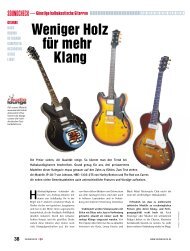Hammerfall® DSP System Multiface
Hammerfall® DSP System Multiface
Hammerfall® DSP System Multiface
Create successful ePaper yourself
Turn your PDF publications into a flip-book with our unique Google optimized e-Paper software.
9. Configuring the Digiface<br />
9.1 General Information<br />
Configuring the H<strong>DSP</strong> system is done using its own settings dialog, the program Hammerfall<br />
<strong>DSP</strong> Settings.<br />
The Hammerfall <strong>DSP</strong>’s hardware offers a number of helpful, well thought-of practical functions<br />
and options which affect how the card operates - it can be configured to suit many different<br />
requirements. The following is available in the 'Settings' dialog:<br />
• Input selection<br />
• Output mode<br />
• Output channel status<br />
• Synchronization behaviour<br />
• Input and output status display<br />
• Time code display<br />
Any changes made in the Settings<br />
dialog are applied immediately -<br />
confirmation (e.g. by clicking on<br />
OK or exiting the dialog) is not<br />
required. However, settings should<br />
not be changed during playback or<br />
record if it can be avoided, as this<br />
can cause unwanted noises. Also,<br />
please note that even in 'Stop'<br />
mode, several programs keep the<br />
recording and playback devices<br />
open, which means that any new<br />
settings might not be applied<br />
immediately.<br />
The status displays at the bottom<br />
of the dialog box give the user<br />
precise information about the current status of the system, and the status of all signals.<br />
‘SyncCheck’ indicates whether there is a valid signal for each input (‘Lock’ or ‘No Lock’), or if<br />
there is a valid and synchronous signal (‘Sync’). The ‘AutoSync Ref’ display shows the input<br />
and frequency of the current sync source.<br />
'Time Code' displays time information received from the I/O-box ADAT Sync port. This is<br />
convenient for checking whether the system is running in time with the transmitting device (e.g.<br />
ADAT).<br />
User’s Guide H<strong>DSP</strong> <strong>System</strong> <strong>Multiface</strong> © RME 12



